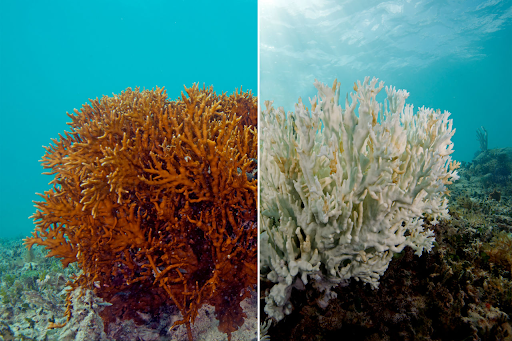Description

Disclaimer: Copyright infringement not intended.
Context:
- Orange alert issued as Delhi logs season’s lowest at 4.4°C.
IMD’S COLOUR-CODED WARNINGS:
- Colour codes are used in weather warnings. Indian Meteorological Department (IMD), issues them for bringing out the severity of the weather phenomena expected. The key idea is to forewarn relevant officials and the disaster management authority “about the impact of the weather expected so as to keep them ready for necessary action related to disaster risk reduction.
- The objective is to alert people ahead of severe or hazardous weather which has the potential to cause damage, widespread disruption or danger to life. Warnings are updated daily.
The IMD uses 4 colour codes -:
- Green (All is well): No advisory is issued.
- Yellow (Be Aware): Yellow indicates severely bad weather spanning across several days. It also suggests that the weather could change for the worse, causing disruption in day-to-day activities.
- Orange/Amber (Be prepared): The orange alert is issued as a warning of extremely bad weather with the potential of disruption in commute with road and rail closures, and interruption of power supply.
- Red (Take Action): When extremely bad weather conditions are certainly going to disrupt travel and power and have significant risks to life, the red alert is issued.
- These alerts are universal in nature and are also issued during floods, depending on the amount of water rising above land/in a river as a result of torrential rainfall. For instance, when the water in a river is ‘above normal’ level, or between the ‘warning’ and ‘danger’ levels, a yellow alert is issued.
- While this is the general interpretation of these colours, for more specific weather events such as rainfall, thunderstorm, lightning, etc these colours point out more warning.
.jpeg)
How is the colour decided?
- According to IMD, a special matrix is followed to decide the colour of weather situations.
- It is based on the “probability of occurrence of the event as well as its impact assessment”.
- The decision of the colour also depends on the meteorological factors, hydrological factors, and geophysical factors that indicate the risk.
IMD:
- The India Meteorological Department (IMD) is an agency of the Ministry of Earth Sciences of the Government of India.
- It is the principal agency responsible for meteorological observations, weather forecasting and seismology.
- IMD is headquartered in Delhi and operates hundreds of observation stations across India and Antarctica.
- Regional offices are in Chennai, Mumbai, Kolkata, Nagpur, Guwahati and New Delhi.
- IMD operates a network of hundreds of surface and glacial observatories, Upper Air (high altitude) stations, ozone and radiation observatories and meteorological radar stations.
- Additional data is received from India's constellation of satellites, such as Kalpana-1, Megha-Tropiquesand instruments on board the IRS series and the INSAT series of satellites.
.jpeg)
https://www.thehindu.com/todays-paper/2023-01-05/th_delhi/articleGN4ANCQ47-1705825.ece






.jpeg)









